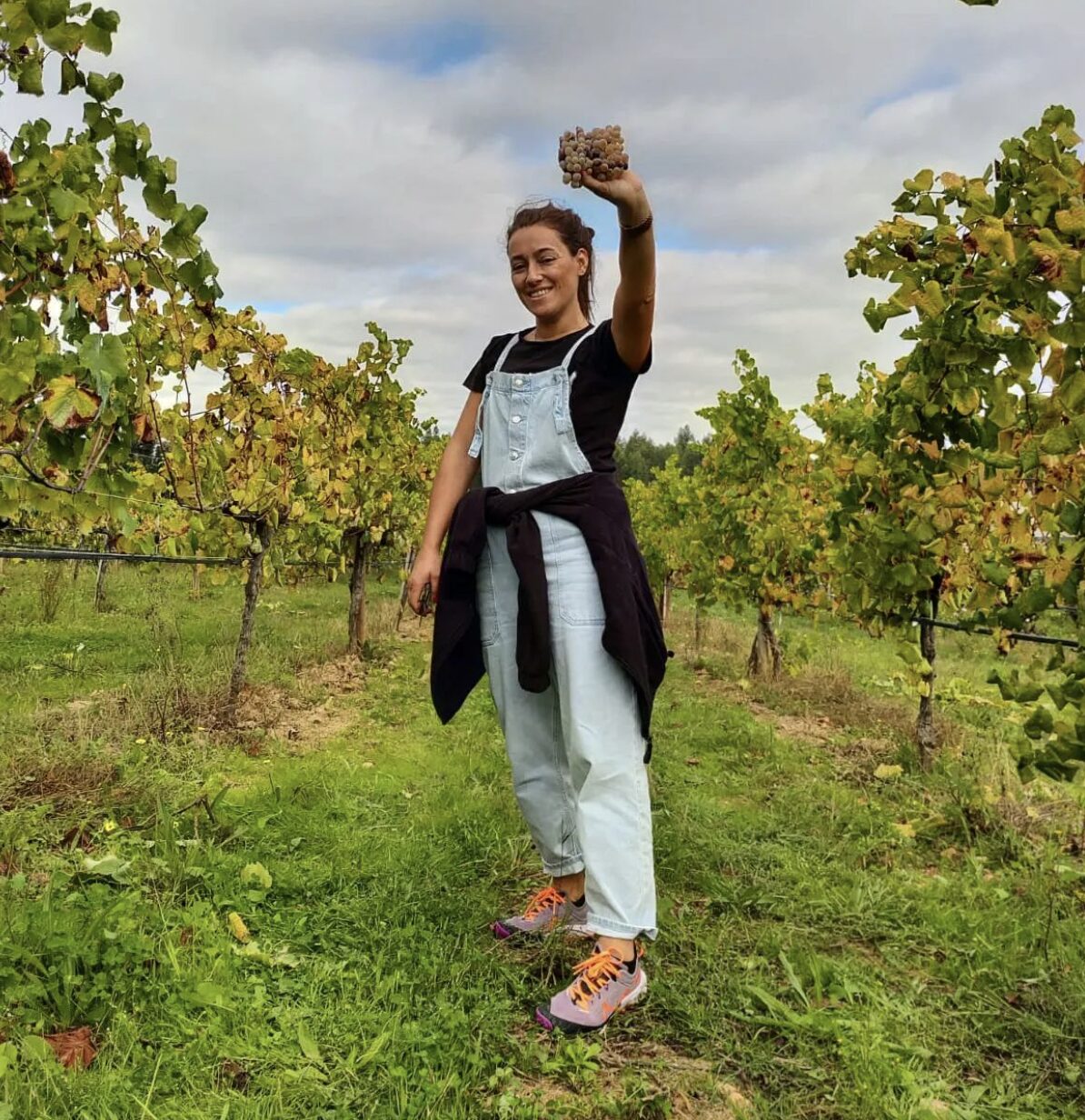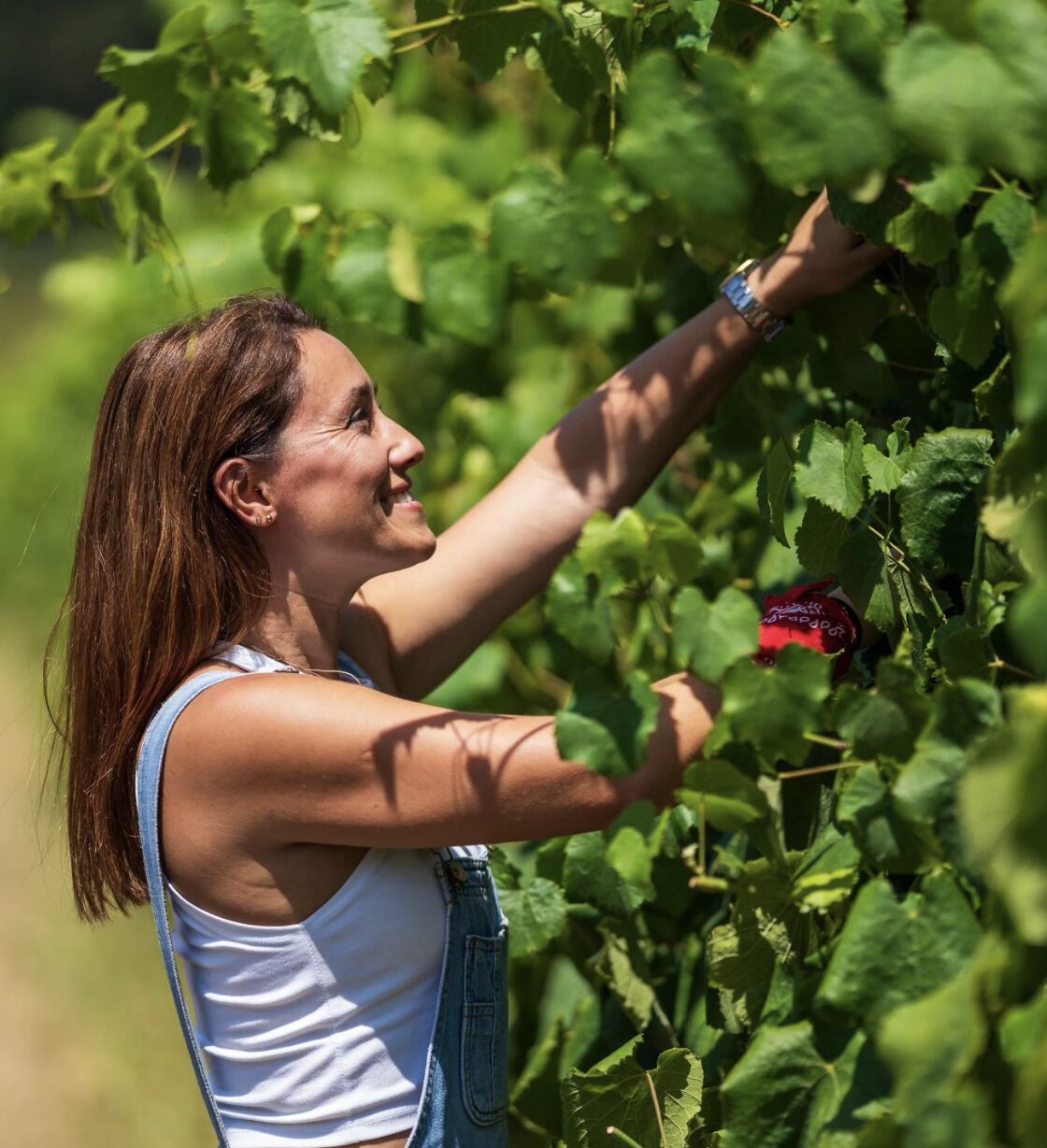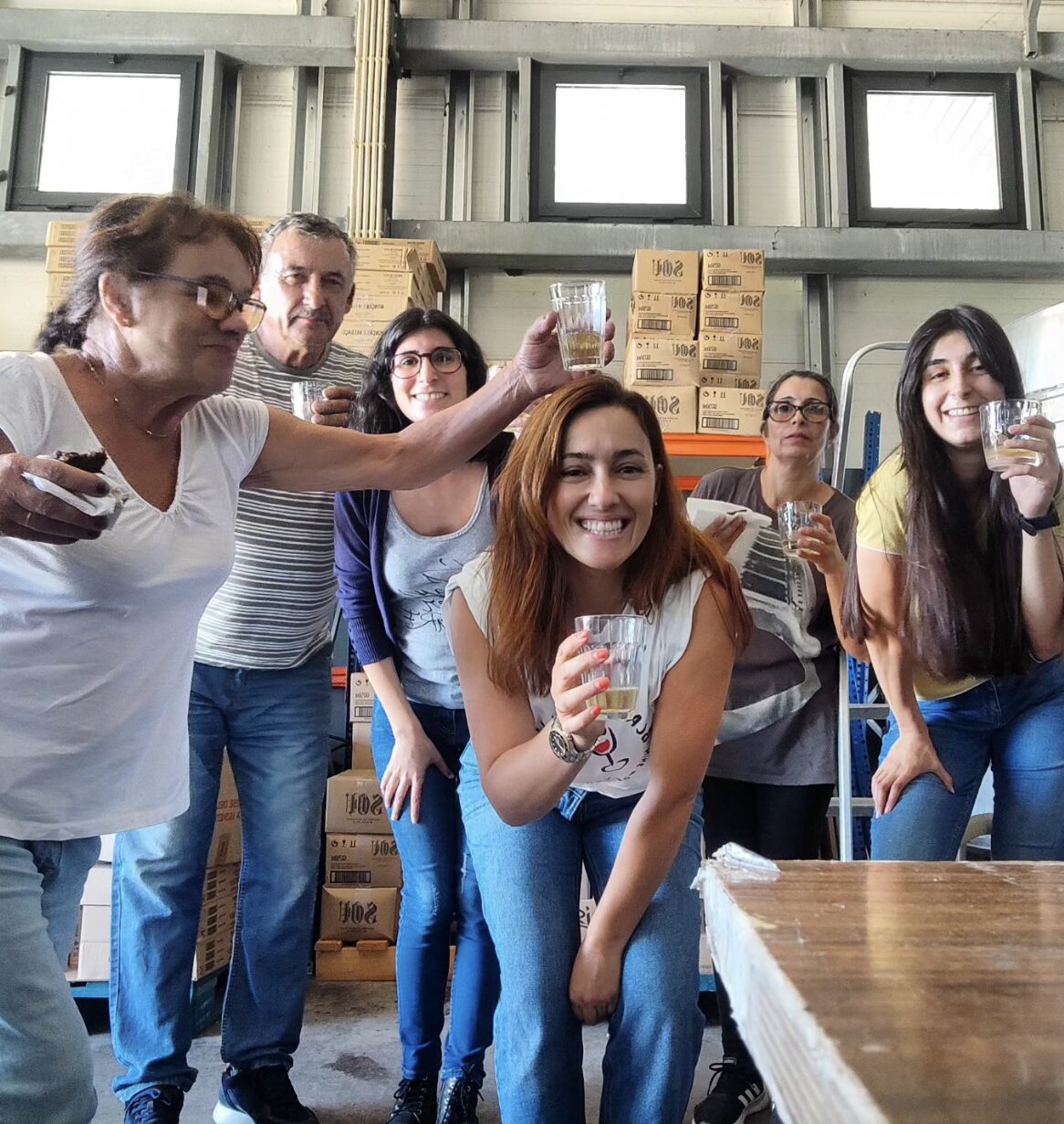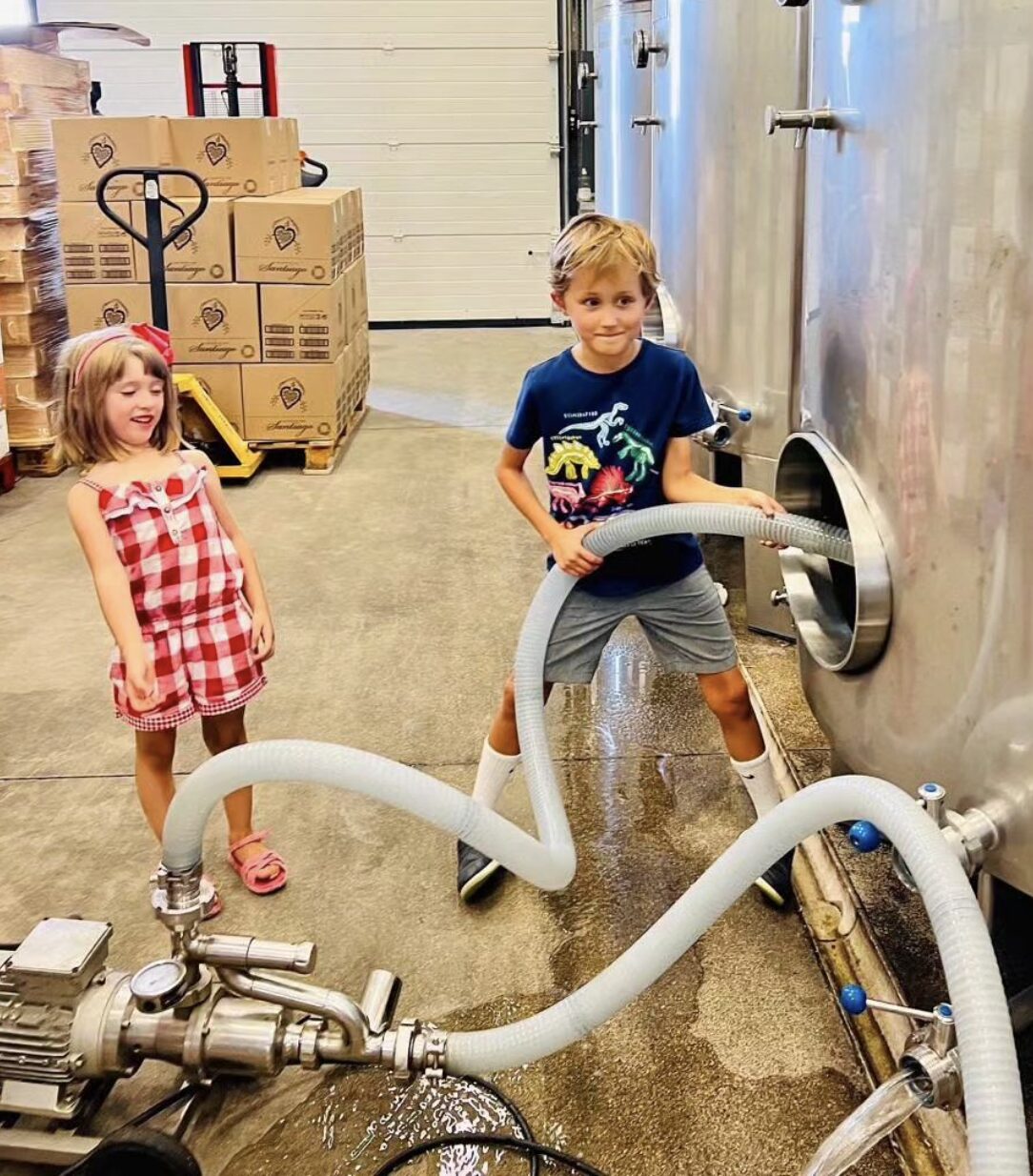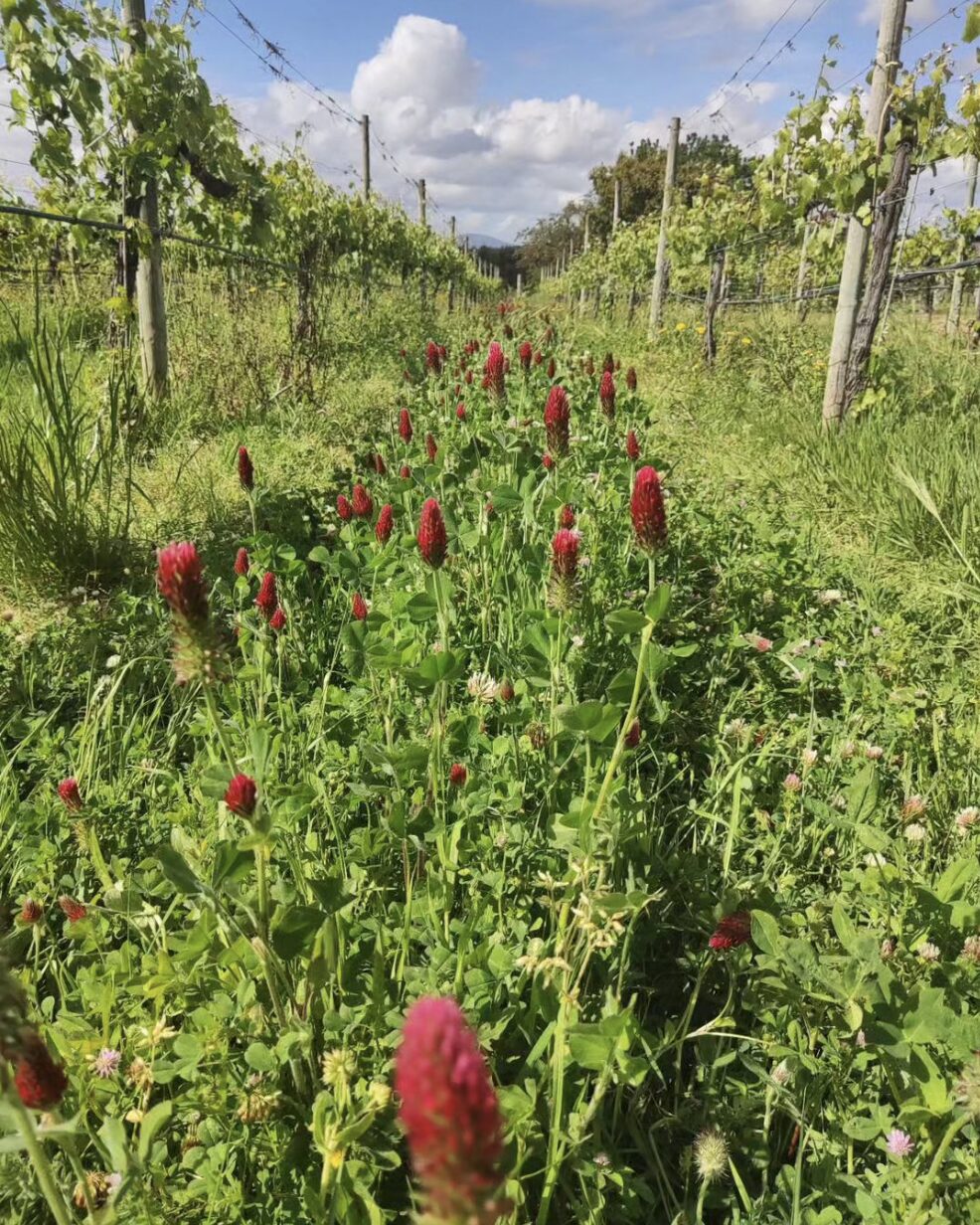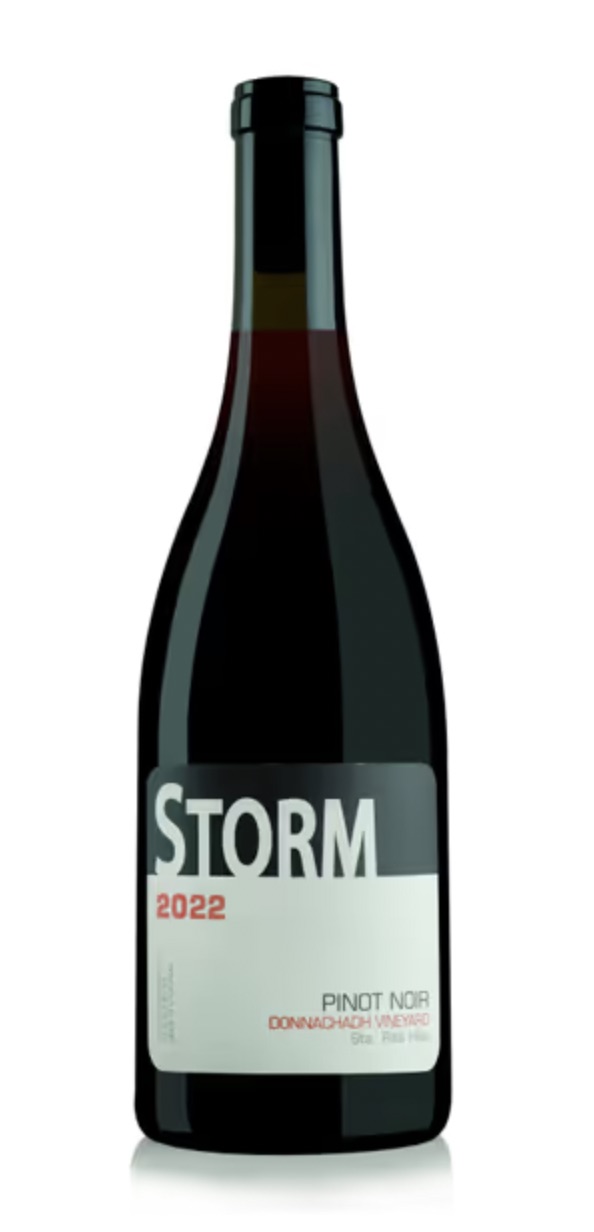2022 Quinta de Santiago ‘Vinha do Pisco’ Alvarinho/Loureiro
Alvarinho, also known as Albariño in the neighboring Galicia region of Spain, is known for being a light and refreshing coastal sipper. Paired with tapas in Spain and Portugal, enjoy this wine with seafood, salads, and veggie forward dishes.
Organic farming practices, hand-harvested, native yeast fermentation, and woman-winemaker.
- Tasting Notes lime, lime zest, lime blossom, green apple, grapefruit, fresh cut herbs, white pepper, minerality
- Variety Alvarinho/Loureiro
- Region Portugal, Vinho Verde
- Volume 750ml
- Alcohol Volume 12%
- Table Talk Joanna is hyper-focused on sustainability and biodiversity. She leads a group of regional growers focused on water use and the preservation of local natural resources.
$34.00
Quinta de Santiago is a family-owned farm spanning 7.5 hectares (18.5 acres) along the banks of the Minho River in the Monção and Melgaço sub-region of Vinho Verde. It has been in the Santiago family since 1899. For about 100 years, Quinta de Santiago’s main activity was the production of wines, olive oil, lupine, cereals, milk, meat, and fruit for self-consumption. Grapes grown in the vineyards were sold to large cooperatives in the region. This changed in 2009 and from the passion and determination of then owner, Grandma Mariazinha Santiago (age 86), her children, and grandchildren, a boutique winery was born.
At the head of the family’s winery is Joana Santiago, a self-described “authentic Minho woman” – driven to honor her family’s heritage. It is from a multi-generation devotion to the family’s land and vineyards that the special qualities of Quinta de Santiago are rooted. Santiago family combine tradition, modernity, and enthusiasm to create authentic wines expressing the terroir of the region’s and farm’s native varietals.
The Vinho Verde wine region is located in the northwest of Portugal, extending across the Minho region. It’s one of the country’s largest wine-producing areas and is famous for its light, refreshing white wines, although red and rosé varieties are also produced.
Here are some key points about the Vinho Verde wine region:
Climate and Geography: The Vinho Verde region has a maritime climate influenced by the Atlantic Ocean, with mild temperatures and high levels of rainfall. The region’s landscape is characterized by lush green countryside, rolling hills, and valleys.
Grape Varieties: The region primarily produces white wines made from indigenous grape varieties such as Alvarinho, Loureiro, Arinto, and Trajadura. These grapes are well-suited to the region’s climate and soil, producing wines with vibrant acidity and distinct aromatic profiles. Some red and rosé wines are also produced, often using grapes like Vinhão and Espadeiro.
Winemaking Techniques: Vinho Verde wines are typically vinified using modern winemaking techniques to preserve their fresh and fruity characteristics. Many of the wines are made using the “green wine” style, which means they are intended to be consumed young and are often slightly effervescent or lightly sparkling.
Styles of Wine: While most Vinho Verde wines are white and known for their crisp acidity and lightness, there are variations in style. Some wines may be slightly fizzy, known as “Loureiro” or “Alvarinho” styles, while others may be still. Rosé and red Vinho Verde wines tend to be less common but offer different flavor profiles, often with fruity and floral notes.
Food Pairing: Vinho Verde wines are incredibly versatile when it comes to food pairing. Their high acidity and freshness make them an excellent match for seafood dishes, salads, light appetizers, and Asian cuisine. They also pair well with traditional Portuguese dishes such as grilled sardines, bacalhau (salted cod), and caldo verde (green soup).
Quality Designations: The Vinho Verde region has several quality designations, including Vinho Verde DOC (Denominação de Origem Controlada) and Vinho Verde VR (Vinho Regional), which indicate the geographical origin and quality standards of the wines produced in the region.
Sustainability: Many producers in the Vinho Verde region are committed to sustainable viticulture practices, including organic and biodynamic farming methods. This focus on sustainability aligns with the region’s natural environment and helps to preserve its unique terroir for future generations.
Overall, the Vinho Verde wine region offers a diverse range of wines that showcase the unique terroir of northwest Portugal, making it a popular choice for wine enthusiasts seeking fresh, vibrant, and approachable wines.
Related Items
-
2023 Hundred Suns ‘Old Eight Cut’ Willamette Valley Pinot Noir
$40.00The Old Eight Cut refers to a diamond cut dating back to the 1400s using simple tools and few cuts to enhance the natural brilliance of the stone without disguising its true nature.
The first sip shows a center point of sweetness that is buttressed by dark red fruit, ripe tannins and a hint of nori that give the wine a serious edge. With air and time, the sappy spicy notes that come from partial whole cluster fermentation resonate on the finish, making this wine one with incredible depth that will drink well now and over the next 10 years.
Sustainable farming practices, dry-farmed, native yeast and partial whole cluster fermentation
-
NV Gimonnet-Gonet Champagne L’Origine Grand Cru Blanc de Blancs
$80.00Gimonnet-Gonet’s L’Origine Brut is a non-vintage Champagne made from 100% Chardonnay from the Grand Cru villages of Oiry, Chouilly, Oger, Cramant and Le-Mesnil-sur-Oger with vines that average 40+ years of age.
This Champagne has a classic golden color with a fine mousseux, and expressive aromas of green apple, white raspberry, citrus blossoms and brioche. The palate is alluring & textured with flavors of kiwi, lemongrass and a salty minerality that is welcoming typicity of the Côte de Blancs. This wine is the true essence of effortless with remarkable flow and length.
Certified sustainable viticulture Terra Vitis, minimum vine age of 40 years, hand-harvested, aged 3 years
-
2022 Storm Wines Donnachadh Vineyard Sta. Rita Hills Pinot Noir
$60.00Crafted by the acclaimed Ernst Storm, this wine shows off everything we love about Sta. Rita Hills Pinot—lifted aromatics, pure red fruit, earthy undertones and silky tannins. A team favorite, this Pinot never fails to impress, no matter who’s at the table or what’s on the menu. It strikes that rare balance of elegance and approachability—making it a staple in our cellar.
Organic farming practices, native yeast fermentation, neutral oak aging, family-owned, less than 500 cases produced.
-
2022 Domaine Trotereau ‘Château de Quincy’
$32.00This wine was sourced from vineyards that come with a unique terroir of sandy, silex, and pink limestone soils… unlike any other Sauvignon Blanc appellation in the world. The combination produces a wine that is beautifully ripe, round, textured, lush, and full of complex aromas. These wines are capable of aging quite gracefully!
Lutte Raisonneé farming, indigenous yeast fermentation, raised in stainless steel & enamel tanks, wine does not underage malolactic conversion.





